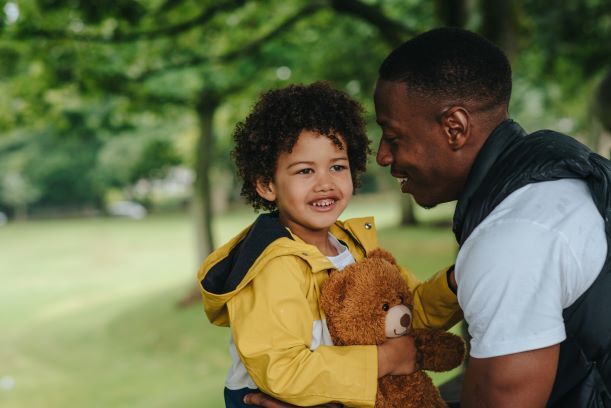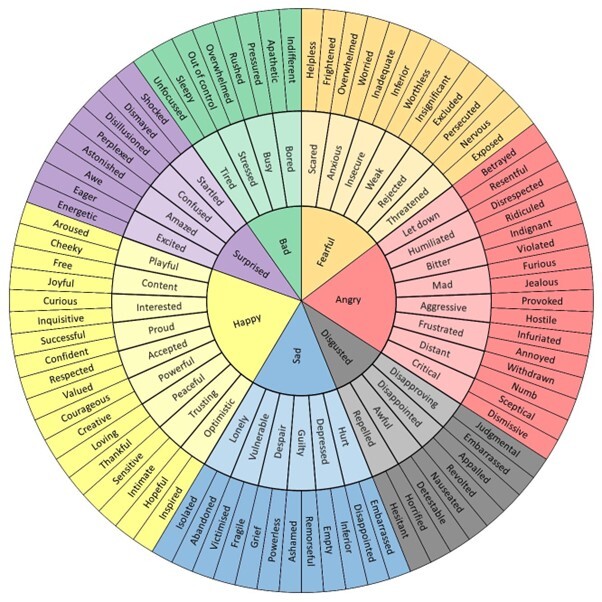Expert Insights
Little people, big feelings: How to develop emotional intelligence in your children
Published 4th December 2023 by Alastair

Navigating the complex world of emotions is a daunting task. Nonetheless, it is a task that needs to be done. Acknowledging emotions is a crucial part of individual growth and it is our responsibility as parents and guardians to support our children and encourage a positive attitude toward dealing with emotions. Emotions are complex and even as adults, we don’t always know the best way to handle the way we’re feeling 100% of the time. How we teach our children about emotions and how to handle emotions is entirely up to us and it is significantly influenced by how we handle emotions ourselves. This can make it tricky, but in everything, the more we know, the less biases we have and the less biases we have, the better equipped we are to help.
The first step in developing emotional intelligence in our children is to help them acknowledge their emotions is by normalizing them. All emotions are normal – there's no "right" or "wrong" emotion to feel. It’s totally fine to have a mix of feelings and sometimes not even know what they are. By normalizing emotions, children are able to grow up with a healthy attitude towards their emotions, feeling confident to deal with whatever comes their way.
The next step in helping your child develop emotional intelligence is encouraging open communication. It is a good idea to get into the habit of sharing our emotions and how they make us feel. By opening lines of communication, your child will soon feel comfortable enough to talk to you about their emotions when they feel necessary. It is important to share feelings, talk about them, and realise that each person expresses emotions differently.
Lately, the mental health of young people is a popular topic in education, current affairs and on social media. Although it seems like a lifetime ago now, some of us may still be dealing with the impact of the pandemic. According to the NHS, before the pandemic, around 1 in 9 young people were experiencing mental health issues. That number has now risen to around 1 in 6.
Many aspects of the pandemic made children feel vulnerable and, in some cases, this has affected the way our children express and deal with emotions. None of us will truly be able to understand what was like to experience a pandemic during our formative years. However, we can create a safe and positive environment for our children to deal with whatever emotional challenges they may encounter.
Sadly, unpleasant feelings are part and parcel of living a rich life. Rather than encouraging our children to suppress those emotions, or telling them that being angry is unacceptable, for example, we should instead focus on how to empower them to regulate and accept these negative emotions. However, there is value in teaching our children acceptable ways to express their big feelings. Especially in social settings or in situations where their peers may be affected. Life is full of ups and downs; it’s how we navigate them that matters.
Our instinct as parents and carers is to swoop in and rescue our children from any discomfort, difficulty, or disappointment. However, if we want to raise emotionally resilient children, we need to take a step back and let them both feel what they are feeling and discover their own ways to meet their problems. In this way, we give them the opportunity to practice making key decisions, which in turn builds their trust and belief in themselves. Stepping in ourselves to save the day robs them of the opportunity to find their own way and thereby learn important lessons.
This isn’t to say that we should be completely passive as carers. It is important to be an active listener. When children encounter difficult emotions, we should be present, remain calm, and really listen to them. This gives them the space to speak out and normalise what they are going through. By validating their experience and its attendant emotions, we communicate that we understand and accept their feelings, whatever they are.
Once a feeling has been felt and the meltdown has been melted, we should help our children develop a richer and wider emotional vocabulary when talking about their feelings. Lately, the word “stressed” has become one of the most popular ways to describe how we are feeling. There are other words that can be used to describe our feelings more accurately. Have a look at this emotions wheel:

Name it to tame it. Through labeling emotions, we make space between ourselves and our experience, which allows us the breathing room we need to respond to our feelings and their challenges. Therefore, by giving children more words to describe what they are feeling we help them better understand themselves and others and are giving them the tools to respond positively.
As part of the grand emotional roller coaster of parenting, navigating the twists and turns can feel like you're on the world's most challenging ride. If we are successful in developing emotional intelligence in our children, is like handing them the map to their own theme park, complete with ups, downs, and the occasional loop-de-loop. Once you’ve covered the basics and established that all emotions are normal and that it’s okay to feel what you are feeling you’re already halfway there. To ensure that our children develop emotional intelligence, opening up the lines of communication is the only thing left to do. Providing a safe space for them and being active listeners will make sharing their feelings less daunting.
We hope you’ve enjoyed this insight. If you’d like to contact Ivy Education about any of the ideas or issues raised in this insight, or indeed with any other educational query, please, don’t hesitate.










